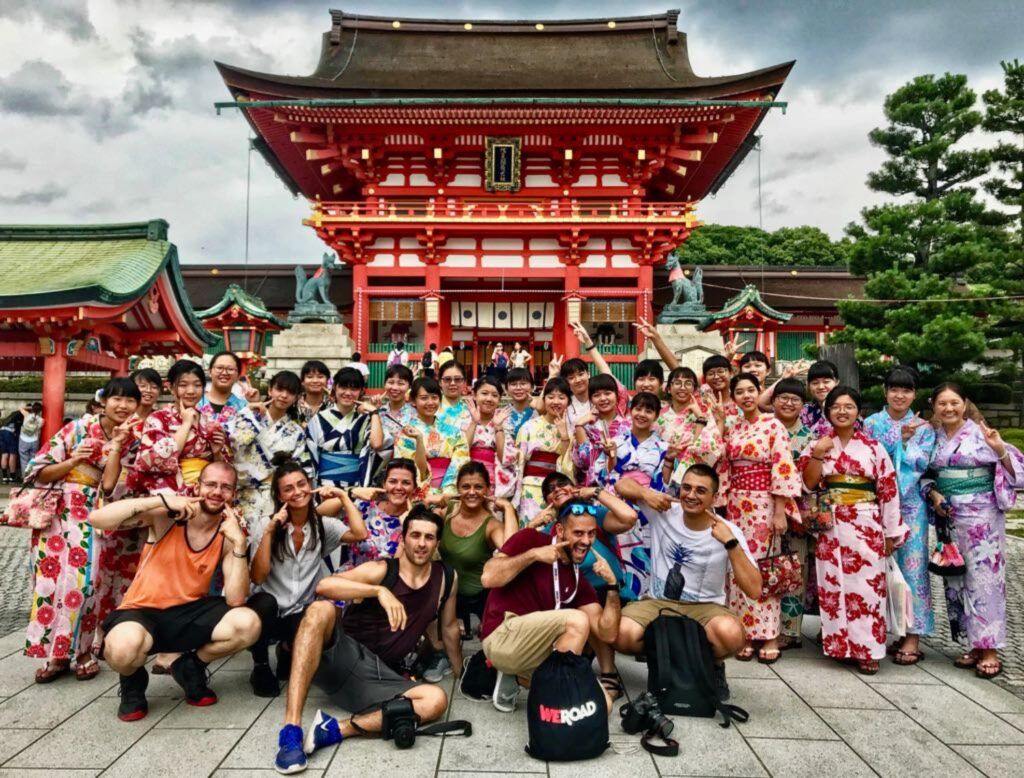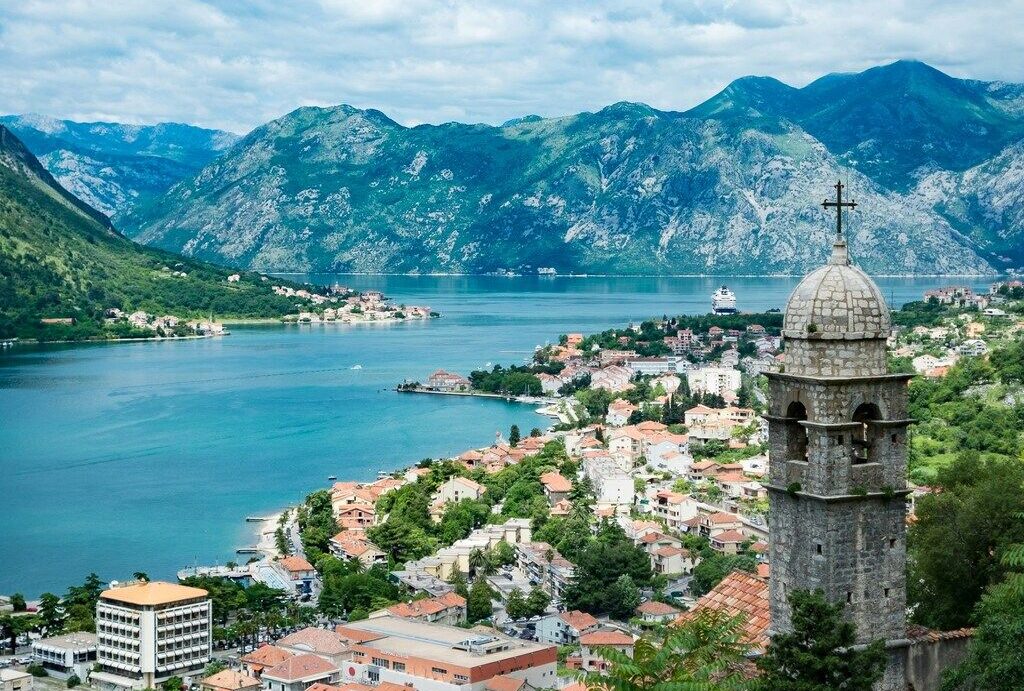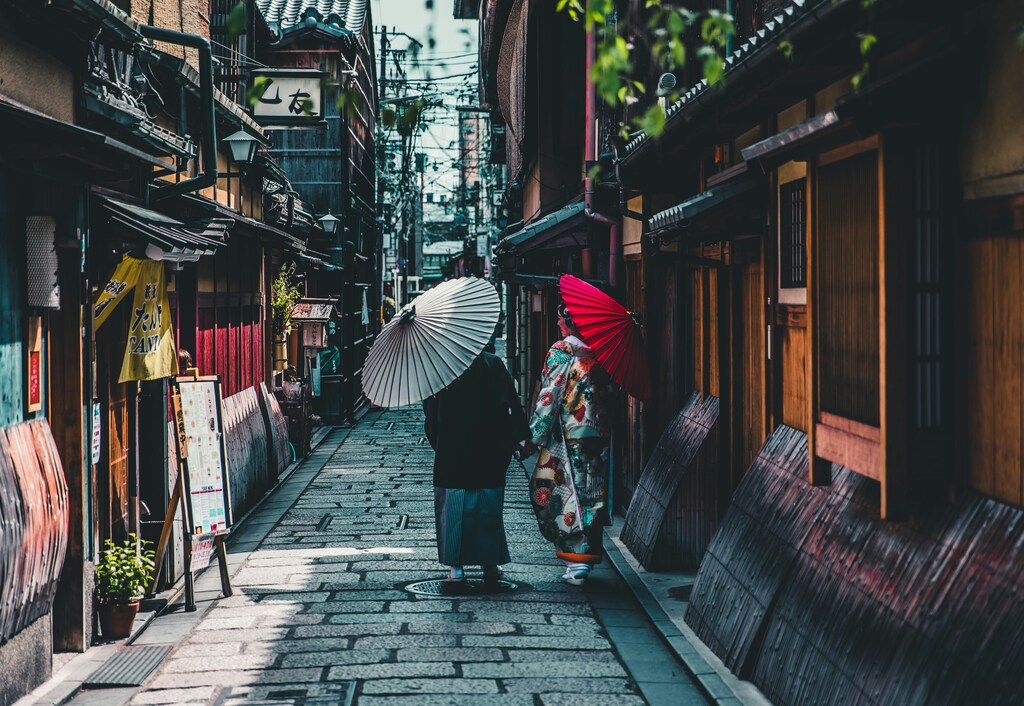

Kyoto, the ancient imperial capital of Japan, is its cultural heart!
A city of history and temples, beautiful gardens, shrines, and flourishing geisha districts, Kyoto is Japan in microcosm. Its culture and history are palpable. Every street corner and building has a story, rewarding the curious traveler in unexpected ways. This guide is your ultimate companion for exploring this city of wonders.
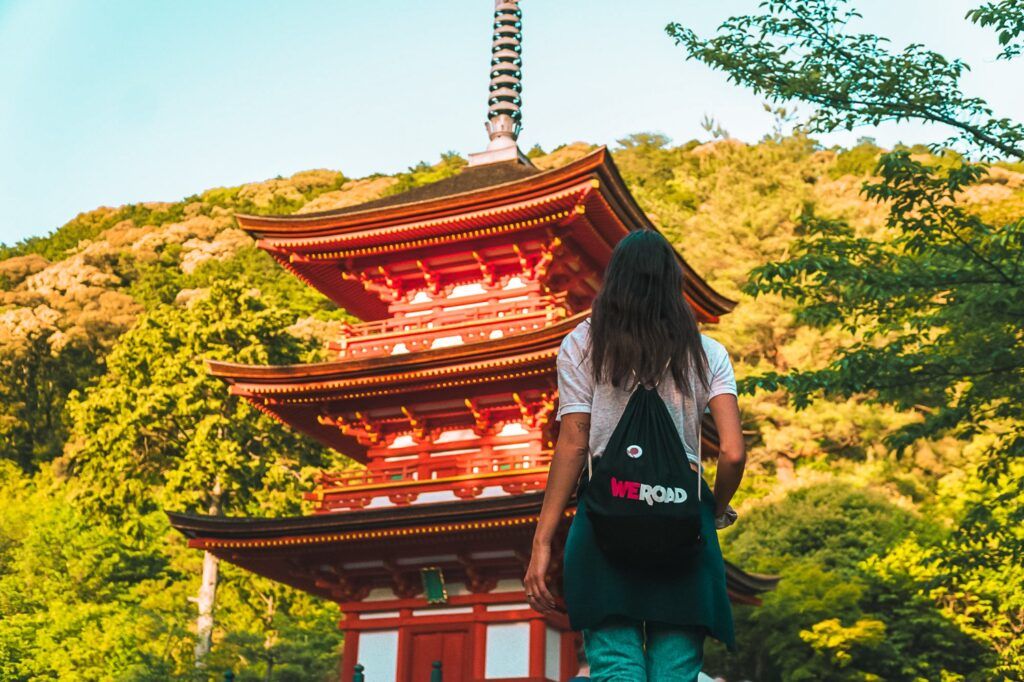
Iconic temples and shrines: Kyoto’s spiritual heart
One of the key reasons to visit Kyoto is to experience its wealth of temples and shrines. Both offer unique spiritual experiences, allowing visitors to absorb the culture through art, landscape, and religious tradition. Just make sure that you plan your itinerary well, so you can make the most of each visit.
Kinkaku-ji — Golden Pavilion
Affectionately referred to as the Golden Pavilion, Kinkaku-ji is Kyoto’s most famous and most glittering Zen Buddhist temple. The upper two stories, in fact, were covered in gold leaf as recently as 1987. This gold coating reflects on the surrounding pond, allowing for stunning photographs of the building. The designer built the garden in unison with the architecture so that harmony might be maintained between the two.
The best time to visit is either just after opening or an hour or so before closing, as the gardens will host fewer people (lighting will be better at those times as well). Follow the one-way system through the gardens to get images from all angles. Fascinatingly, someone originally intended Kinkaku-ji to be a retirement villa before the shogun era and later donated it to become a temple. The building survived two arson attempts in the 1950s and has been faithfully rebuilt twice since then. If you look carefully enough, you’ll see more interesting carvings in and around the surrounding tea houses.
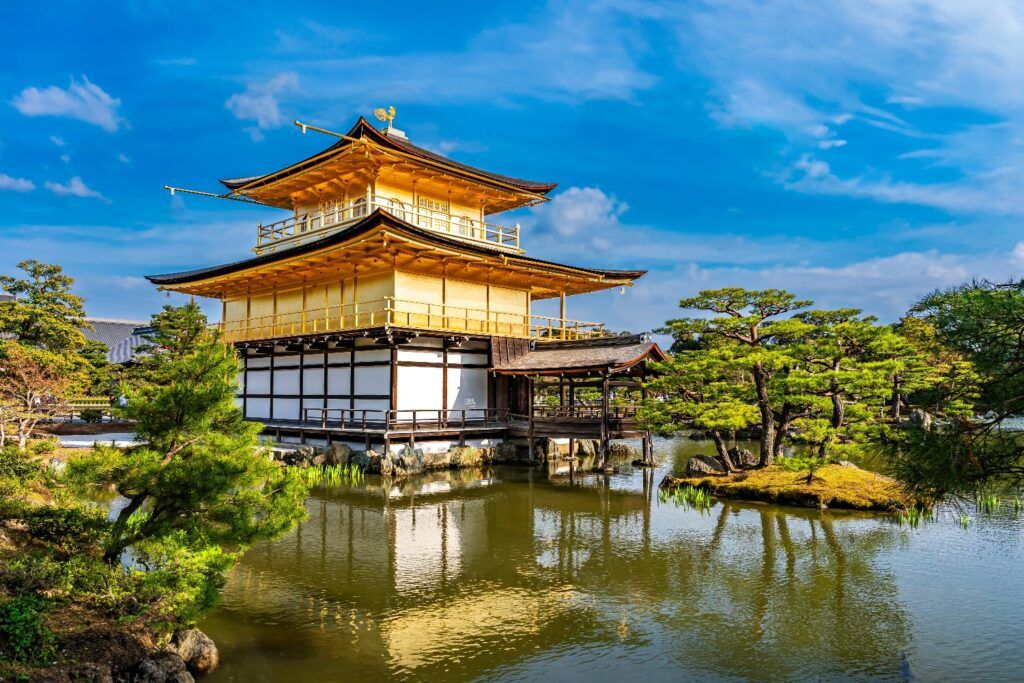
Fushimi Inari-taisha
The Fushimi Inari-taisha is a top sight in Kyoto, with paths where thousands of torii gates create a mesmerizing tunnel up the mountain. Dedicated to Inari, the god of prosperity and rice, fox-shaped statues welcome visitors throughout the complex. Most people can complete the hike up and down in two or three hours, but there are also shorter loop hikes. This place gets extremely crowded, so if you want amazing photos and fewer people, you should arrive at sunrise. Along the way, you’ll find smaller shrines and excellent viewpoints. The fox statues, divine messengers, are related to a successful harvest story in the area.

Kiyomizu-dera Temple
The Kiyomizu-dera is famous for its large wooden stage built on its mountainside location, allowing visitors panoramic views of Kyoto. Down the stairs of the main hall, the Otowa Waterfall flows with three channels representing health, longevity, or wisdom for those who drink. Sannenzaka and Ninenzaka are preserved streets en route to the temple and are worth a stop to look at the traditional shops. This temple is particularly beautiful during cherry blossom season or when the leaves change color in fall. Fewer crowds and visible scenery are guaranteed if you come early or late.
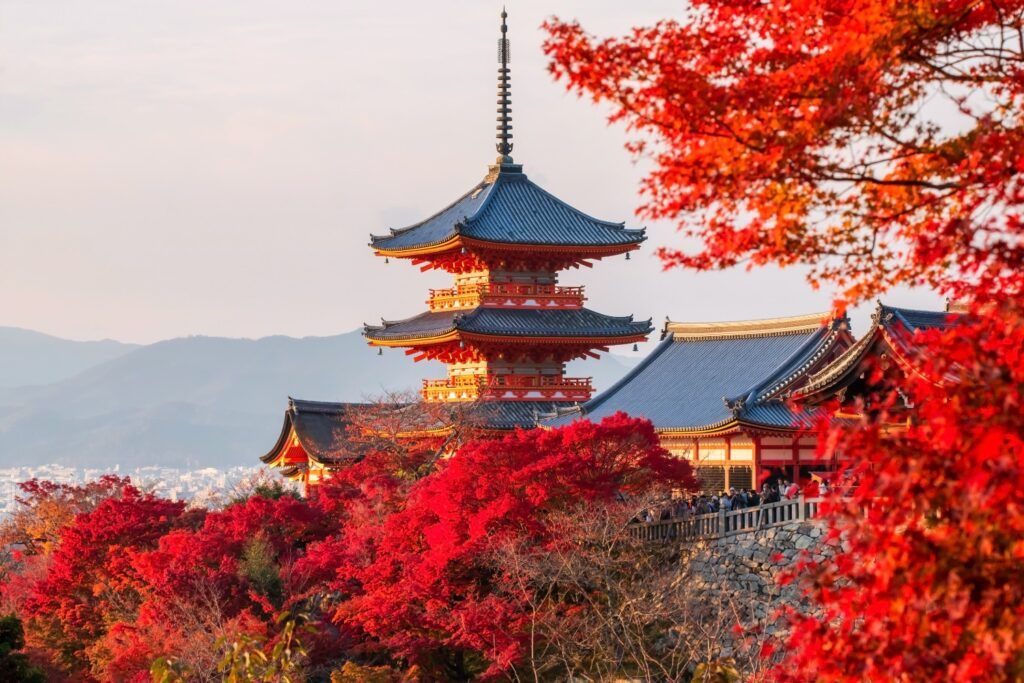
Ryoan-ji Temple
Famous worldwide for its rock garden (karesansui) representing a Zen landscape, Ryoan-ji is a simple garden with only fifteen rocks on moss, surrounded by pebbles in a square plot. No matter where you stand, you can never see all fifteen rocks, which was likely the intent of the designer.
Besides the garden, visitors can stroll through the moss garden or by the pond. It’s a spot to stop, sit, and meditate. Its basic, simple aesthetic makes it the perfect quiet place for absorbing Japanese design.

Nature and scenic Beauty: Kyoto’s tranquil escapes
Tranquil gardens and forested parks offer respite from the city’s otherwise busy, historical landscape. Hills, forests, canals, and seasonal landscapes offer visitors a deep immersion in natural beauty. They’re not only lovely to look at and photograph, but also important places tied to human history and spirituality. Venturing to them during quieter morning or late afternoon times affords better light and fewer crowds. It’s a way to engage in the local environmentalism and traditional ways passed down over multiple centuries.
Arashiyama Bamboo Grove
Wandering through the Arashiyama Bamboo Grove is an ethereal experience. The tall bamboo reaches high above, creating an enveloping green tunnel. A morning visit provides a quiet, atmospheric tone and good light. Nearby Tenryū-ji Temple, a UNESCO World Heritage site, demonstrates traditional gardens and displays that support the bamboo forest. The Katsura River flows beneath Togetsukyo Bridge, a place to gaze at the green mountains and cherry blossom views. Exploring both makes for a full day itinerary. A sprinkle of tearooms and cafes sit along the river’s edge to provide an escape. The grove has been there for many years as a quiet place for enlightenment, so help keep it that way.

Philosopher’s Path
Philosopher’s Path is a stretch of stone walkway surrounding a canal with sakura trees and moss. It is named for the philosophy professor Nishida Kitaro, who believed that walking and reflection are good practices. The Path refreshes the spirit as visitors walk down its shady, green tunnel. In spring, the cherry blossoms bloom in a canopy of pink flowers, reflecting in the waters. Various smaller spots to enjoy tea and temples exist along the Path. Ginkaku-ji marks the end and provides a delightful spot to find gardens and areas for peace and meditation. Go in the early morning or late afternoon for a quieter visit and beautiful lighting. The stone path allows for a comforting walk, photo opportunities, and chances to sample tea at shops using local seasonal snacks.
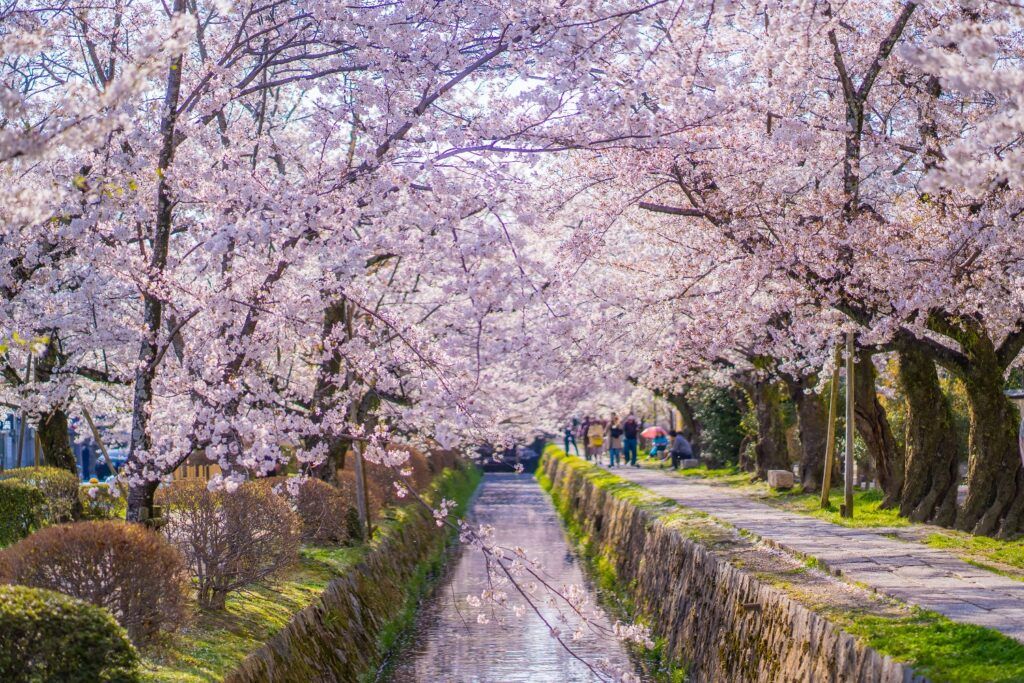
Cultural districts and historical sites: stepping back in time
The ancient capital’s cultural districts unveil its multiple social structures. Historical wooden houses, markets, and castles offer glimpses into the life of the ancient Japanese. Visitors can experience the traditional customs of the area, the outstanding architecture, and the magnificent atmosphere. Though some popular districts can be crowded at times, ensure that you visit at the right hours.
Gion District
The Gion District is the famous Geisha quarter of Kyoto, with narrow lanes of traditional wooden machiya houses. Geiko (Geisha in the Kyoto dialect) and Maiko (apprentice Geisha) tend to only make sudden, short appearances on their way to appointments, so be respectful (no chasing, blocking their way, or intrusive photography). Hanami-koji Street is the center of activity, but Shirakawa, with its picturesque canals and bridges, is a lovely place to walk and take photos. It becomes even more beautiful in the evening when the lanterns are lit. Traditional tea houses in Gion are a great place for experiencing formal Kyoto-style dining and true Japanese hospitality. Find out what Geiko and Maiko really mean. This is an informative and fun little booklet giving a whole new appreciation for what you see in Gion.
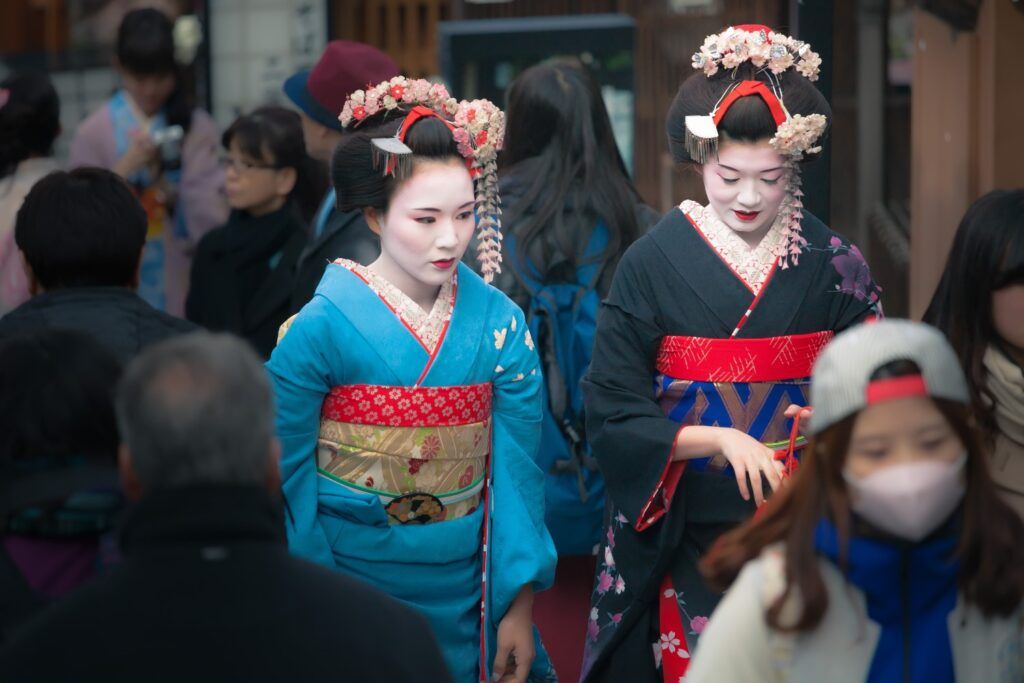
Nishiki Market
Nishiki Market is known as Kyoto’s Kitchen for good reason. This busy market is a long, narrow covered shopping street filled with food of all types. You will see pickles, tofu doughnuts, fresh and dried seafood, kitchen supplies, rice, tea, and all things imaginable for a Japanese kitchen. Go around mid-morning to avoid the lunch crunch, giving time to wander, take photos, and taste many delicious small dishes. It is very photogenic, with lanterns, signs, and colorful goods not seen in other places in Japan. Talk with shopkeepers to get insider information on Kyoto’s culture of food and the market. Learn why things are raised, grown, or made a certain way in Kyoto, and why they taste as good as they do. This is a great place for photographers, foodies, or anyone wishing to experience the city’s authentic cuisine.
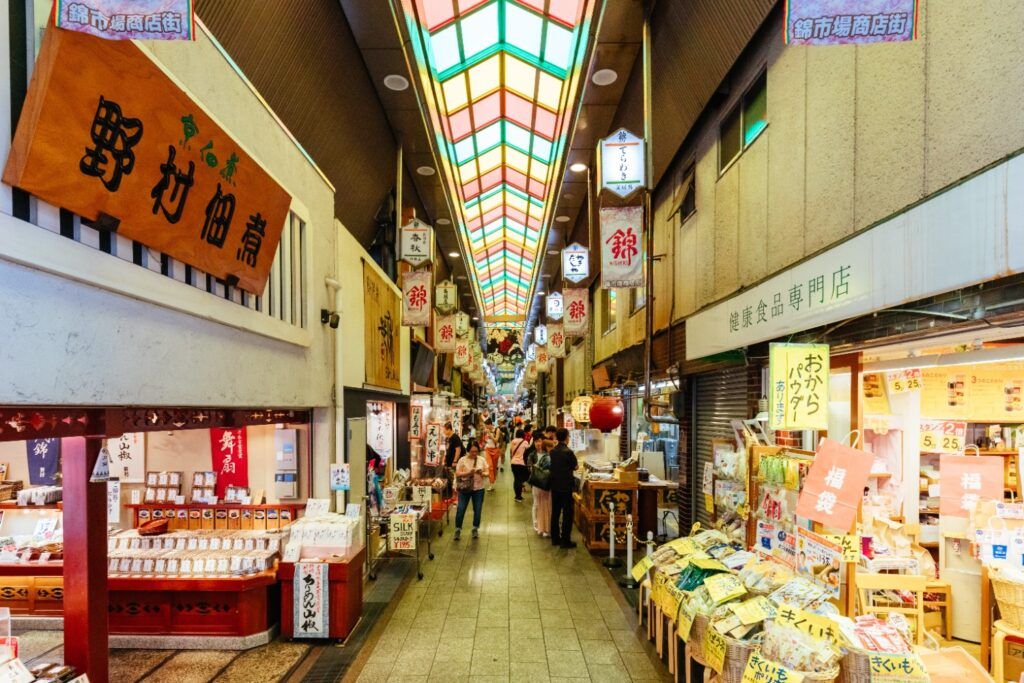
Nijō Castle
Nijō Castle was built as the Kyoto residence of the Tokugawa Shoguns, a city within a city. This huge palace-style building shows how the Shogun lived and their power ruling Japan. The Ninomaru Garden, with its weeping cherry trees and carefully landscaped beauty, is wonderful. This 17th-century palace has nightingale floors that chirp when stepped on. The “chirping” is caused by a special mechanism designed to warn the Shogun of approaching assassins. This magnificent building is a wonder with beautiful paintings and woodwork, though very dark. Go early in the morning or late afternoon. The place will be less crowded, allowing a sense of life in old Kyoto. Understand why the Japanese nobility and warrior classes valued this comfortable lifestyle. Feel the unique sensation of walking on a Nightingale floor with this explanation.
These natural and cultural attractions in Kyoto offer experiences that complement one another. The bamboo groves, cherry-lined paths, geisha districts, and castle all provide scenic beauty and immersive experiences. With respect for local culture, visitors can fully enjoy the city’s rivers, roads, and customs. Breathe, view, photograph, and absorb these centuries-old traditions for a truly great Kyoto experience.
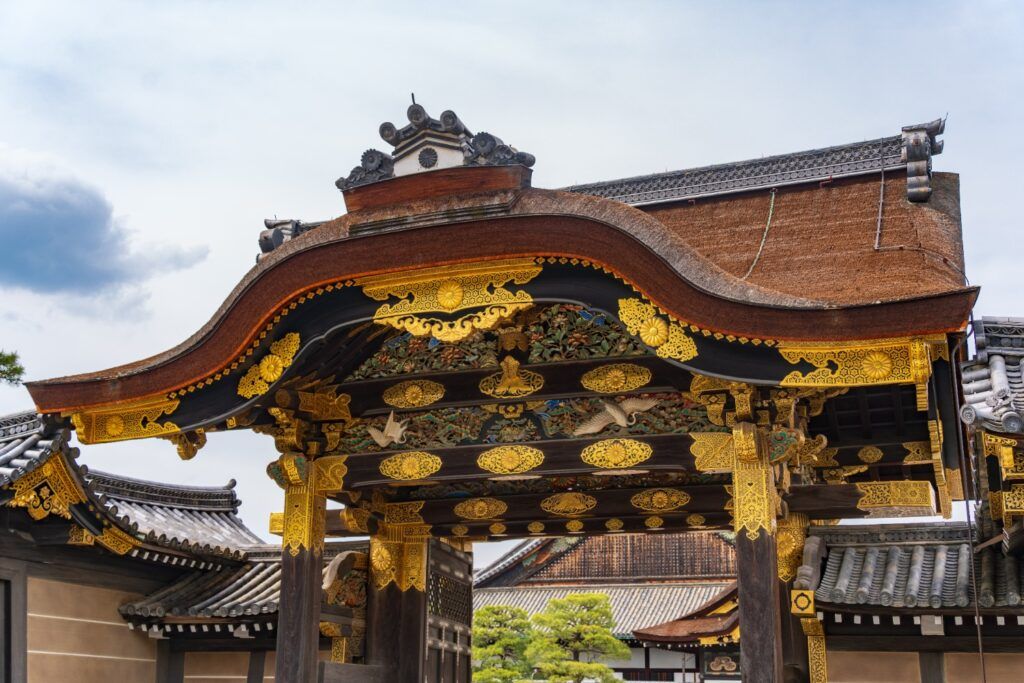
Insider tips for visiting Kyoto’s sights
Maneuvering the ancient capital like an insider can make all the difference in checking Kyoto’s top attractions off your essential itinerary! Here’s how this destination fits into what we see all across Japan.
Tips and tricks
The city is extremely well set up with an extensive bus system running throughout the city to nearly every major site. Purchase a day pass or a 2-day pass and enjoy unlimited access to all temples, gardens, or districts in a single day. The same applies to the subway, where public transportation is perfect for reaching Arashiyama or Kyoto Station. If exploring downtown or the Gion, walking is ideal. Map out most, if not all, places by zone to avoid trekking across the city. This grid system saves time and energy, providing a better overall experience. Using the Japan Rail Pass for day trips from Kyoto, valid for one week or more, travel is easy. This rail pass is perfect for day trips to Nara, Osaka, or other Kyoto points of interest.
One of the best tips is to understand temple and shrine etiquette. Always start at the purification fountain (temizuya). Bow before and after walking through a torii gate, make a wish, and pray silently. Never shout or run on temple grounds, avoid photographing idols, and give a respectful bow to praying monks.
Check the subway map in English, and pick up multi-temple tickets when available. Kyoto’s points of interest are spread out, so see if bus, subway, or walking suits your plans. Confirm hours before visiting on holidays or during seasonal events. Ensure all essential Japan visa information is ready to avoid mishaps. Morning or late afternoon visits reduce crowds, enhancing your experience. Private guides can provide deeper insights into temples, culture, and life in Kyoto. Wear comfortable shoes, bring a refillable water bottle, and a lightweight rain jacket for long days of exploration.
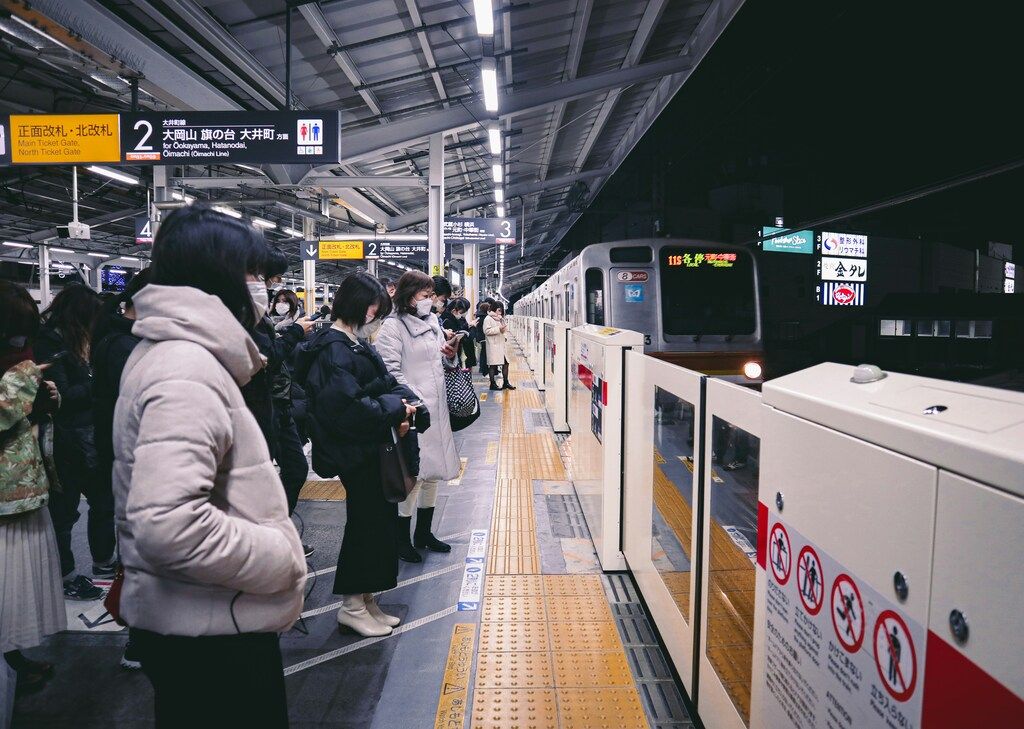
Kyoto is waiting: your Journey into Japan’s heart begins
Regardless of where you travel in Japan, its cultural and historical heart lies within Kyoto. Whether talking about age-old traditions or scenic nature, this city is a work of art. Each visit brings new memories and a deeper connection to Japan’s history—whether on the Philosopher’s Path or under Arashiyama’s bamboo groves.
The city’s districts tell stories of centuries-old architecture, craft, cuisine, and festivals, attracting travelers since tourism began. Kyoto’s tranquility suits those seeking both enlightenment and stimulation. Planning your trip determines the depth of experience and engagement with the city’s historical spirit.
Ready to turn your trip into an unforgettable cultural adventure? Check our group trips to Japan, covering top sights with expert coordinators. First-time visitors can join an organised group trip visiting Tokyo, Kyoto, Hiroshima and Osaka, enjoying all highlights with no hassle.
